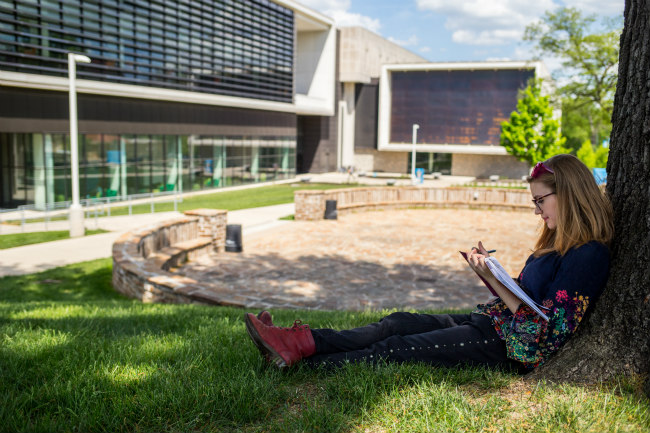By Patricia O’Dell
The grace of the quad, the tranquility of the grounds of Linda Hall Library and the unique appeal of the limestone buildings enhance the quiet beauty of the University of Missouri-Kansas City Volker Campus. While UMKC looks to growth and the ability to embrace new technology and ever-evolving educational needs, it is focused on improving the campus as a whole.
Recently, the Miller Nichols Charitable Foundation donated over $160,000 to UMKC Foundation to support new landscaping for the Miller Nichols Library and Learning Center site. In 2010, the charitable foundation also supported the building of the RooBot — the first robotic library storage and retrieval system in the region— and the library, which created 950 new classroom seats and a strong presence on the east side of campus.
Kay Callison, president of the foundation, began considering landscaping as soon as the library, learning center and RooBot were complete.
“The three buildings are large in size and commanding in scope. They needed landscaping which was more current, sustainable and suitable for the university, the users of the library complex and the community,” Callison says.
Callison worked with campus management to coordinate landscaping which is beautiful and includes both plants and hardscape materials. The team considered soil and topography, weather and future maintenance costs.
In addition to plantings around the base of the library building, the plan also includes significant improvements to the remaining patio of the University Playhouse— a natural extension of the library — providing space for students, faculty and staff to gather outdoors which is a popular gathering spot on campus. Nine white-bud trees will be planted north of the playhouse area near the entrances of the library and learning center, and two planters will be added for planting spring and fall annuals at the Playhouse patio in 2019 as part of the second phase of the project. In addition, the sloping area northwest of the Learning Center will be landscaped with plant and hardscape materials.
While bricks and mortar are significant investments in research and student learning, John Eck, associate teaching professor in the Department of Architecture, Urban Planning and Design, believes environmental design is important, too.
“One of the first things we teach our students is that using the term ‘environmental design’ is the best way to describe what urban planners, architects, interior architects and landscape architects do,” Eck says. “Environments — inside or outside— provide functional and inspirational spaces for work, life and play.”
Eck and his team reinforce the importance of considering outdoor spaces while developing their designs, whether they are residential or commercial projects.
“A college campus is probably the best and highest example of this,” he says. “Well-designed exterior spaces on a campus—quads, courtyards, plazas, paths—are just as important as classrooms in that they provide places for students to decompress and recharge. I think we all know what fresh air, sunlight and vegetation do for mental health. The design and maintenance of our campus greenspaces is critical to that sense of well-being.”
While landscaping may not be something of which students or visitors are consciously aware, there’s no question that these plans and plantings enhance the university as a whole.
“It softens the buildings and makes the campus feel welcoming and approachable,” Eck says. “For most of us, the word ‘campus’ conjures up a mental image that is of a landscape first, with buildings second, forming the edges of that landscape. A true campus really can’t exist without both, working in harmony with each other.”
Callison agrees.
“It will be interesting to see how people – students, professors, administrations and visitors might use the space differently and how they interact with the new landscape and design.”

